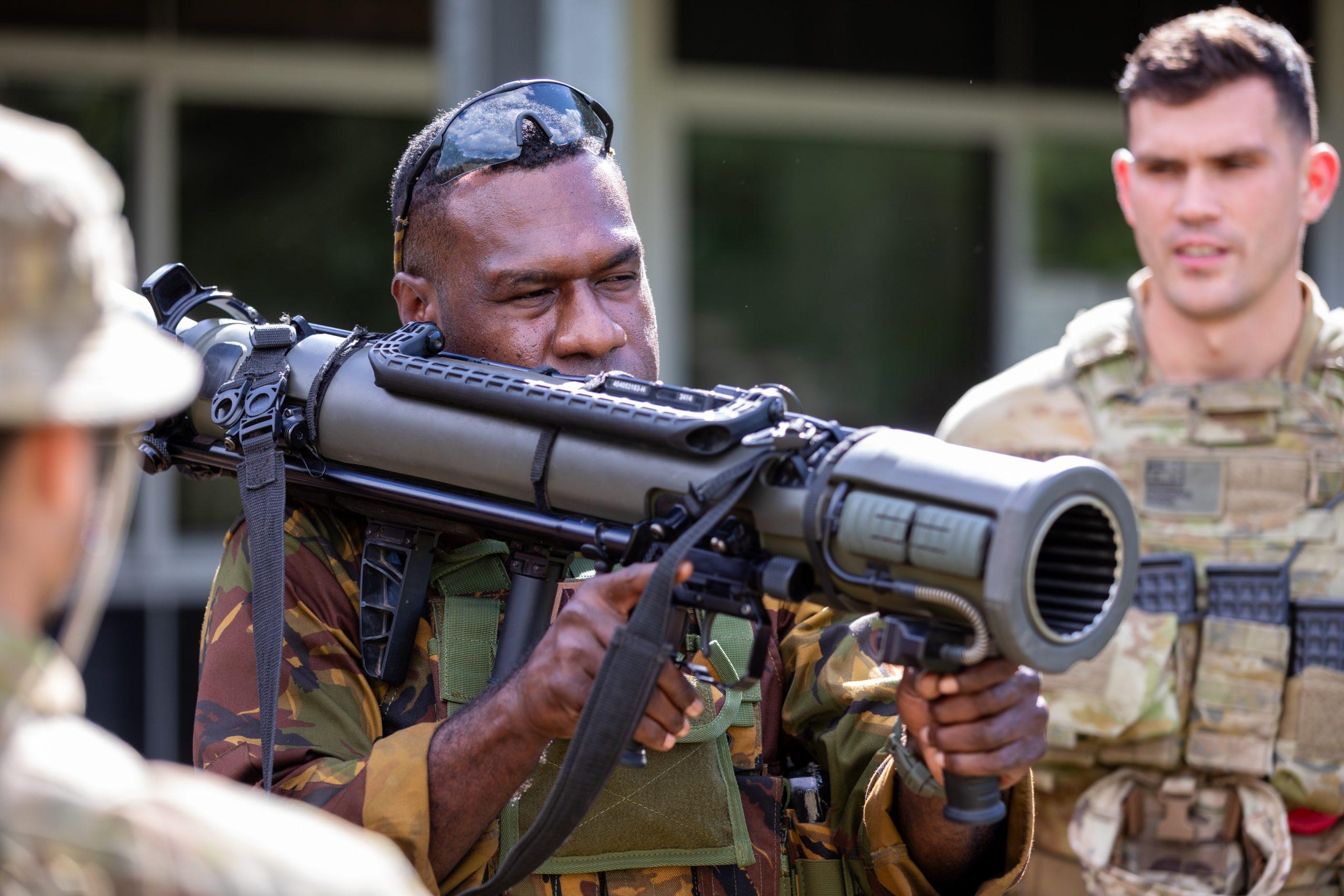
The Australian Defence Force should foster a deeper presence with partners in our near north, especially Papua New Guinea. This would enable joint training in littoral warfare to master new technologies, facilitate recruitment of PNG personnel into the ADF and allow for greater contribution to regional security.
Described as Australia’s ‘security shield’, PNG is a key partner in the ADF’s task of defending Australia and contributing to collective security in the Indo-Pacific, part of the strategy of deterrence through denial outlined in the 2023 Defence Strategic Review and the 2024 National Defence Strategy. We must leverage and expand on existing ADF presence in the region, starting with PNG.
PNG needs to be a priority because it is considered by some to be the next Pacific battleground for US-China competition and influence, with China signing a mining agreement with PNG earlier this year. if Australia doesn’t seek further ties, someone else will.
Close to Australia, PNG has long been intimately linked with Australian security. The 1942 PNG Kokoda campaign was crucial in halting the advance of Japan through the Pacific, and the Battle of Milne Bay saw the Allies deliver the first defeat of Japanese forces on land. The New Guinea offensives of 1943-44 were the single largest series of interconnected military operations in Australian history, and the 1943 operation at Lae represented Australia’s first major amphibious landing since Gallipoli. When Australia’s defence strategy refers to littoral warfare in our northern approaches, it is referring to this region.
In recent times, Australia and PNG have drawn even closer as regional neighbours. Australia supported PNG through Covid-19 and development assistance, the Defence Cooperation Program and disaster response. The two nations signed a bilateral security agreement in 2023, and Prime Ministers Anthony Albanese and James Marape walked the Kokoda Track together to commemorate Anzac Day this year.
Australian presence in PNG could emulate the existing engagement at the Royal Malaysian Air Force (RMAF) base at Butterworth. The air force base hosts an Australian Army company and air force squadron plus a joint health command, and allows for regional aerial surveillance and intelligence gathering. A PNG version of this arrangement could specialise in littoral warfare training for Australian and PNG soldiers, and in building joint capability in the littoral battlespace.
Joint training in the new and emerging technologies of littoral warfare could also help strengthen local security, if new skills in aerial surveillance could be applied to tackling illegal, unreported and unregulated (IUU) fishing and instability in the highland region. ADF reserves could participate in this effort. Army reserves already rotate through RMAF Butterworth and conduct domestic amphibious training. This would follow the recent trend of the military co-opting civilian expertise: commercial drone operators are now being used by military contractors in the Middle East.
ADF littoral training in PNG could take place at the Igam Barracks at Lae, constructed in 2022, and the Lombrum Naval Base, currently undergoing redevelopment. Supporting ADF capability would complement and expand on the bases’ existing roles in maritime and regional security. Australian presence at these bases may also support recruitment of PNG personnel into the ADF by facilitating entry pathways. PNG soldiers could form part of a Pacific Battalion, aligning with ADF workforce changes that allow for non-citizen enlistment.
A stronger partnership with PNG should be complemented by multilateral training exercises in littoral operations with other near north partners including Indonesia and Timor-Leste, and even those further afield such as the United States, Japan and South Korea. Joint training could take place at Shoalwater Bay in Queensland and in the littoral and jungle areas of PNG, as well as the archipelagic environment around Indonesia and Timor-Leste.
The Australia-PNG model could be applied to other partners in the region to further boost Australian presence and capability. Each arrangement should cater to the political, security and economic climates of the partner nation, and utilise its strengths. For example, Timor-Leste and Indonesia could offer avenues of increased cooperation and presence in the littoral domain, as well as further north into Southeast Asia.
A deeper Australian presence in the Indo-Pacific would allow for a greater contribution to regional security. For instance, Australia could support Thailand, Vietnam and the Philippines in their efforts to modernise maritime military operations to combat piracy, IUU fishing and territorial encroachment. Australia could utilise its naval shipbuilding capacity or invest directly in related industries in the affected countries to address the economic factors that underline piracy and IUU fishing. Other ways to increase Australian presence in the region could include establishing a new maritime security program for Southeast Asia or developing dual-use ports at strategic points such as Thailand’s Kra Canal.
By building stronger defence ties, Australia can contribute to the strength of the region, helping partner nations tackle urgent issues such as domestic insecurity and climate change. Deterrence by denial relies on shifting the calculus and cost-benefit analysis of an adversary. A key aim in Australian security should be to boost our presence in our near north, not only through personnel and infrastructure, but through deeper regional relationships and interoperability.